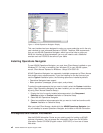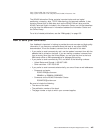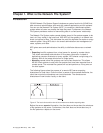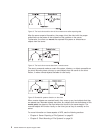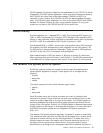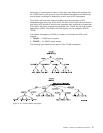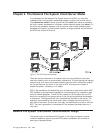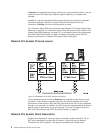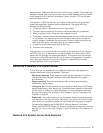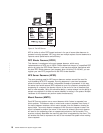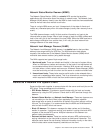
users that all data exists and is processed on their local workstations. An efficient
NFS network also gives the right people access to the right amount of data at the
right times.
Files and directories can be made available to clients by exporting from the server
and mounting on clients through a pervasive NFS client/server relationship. An
NFS client can also, at the same time, function as an NFS server, just as an NFS
server can function as a client.
Stateless Network Protocol
NFS incorporates the Remote Procedure Call (RPC) for client/server
communication. RPC is a high-end network protocol that encompasses many
simpler protocols, such as Transmission Control Protocol (TCP) and User Datagram
Protocol (UDP).
NFS is a stateless protocol, maintaining absolutely no saved or archived
information from client/server communications. State is the information regarding a
request that describes exactly what the request does. A stateful protocol saves
information about users and requests for use with many procedures. Statelessness
is a condition where no information is retained about users and their requests. This
condition demands that the information surrounding a request be sent with every
single request. Due to NFS statelessness, each RPC request contains all the
required information for the client and server to process user requests.
By using NFS, AS/400 users can bypass the details of the network interface. NFS
isolates applications from the physical and logical elements of data communications
and allows applications to use a variety of different transports.
In short, the NFS protocol is useful for applications that need to transfer information
over a client/server network. For more information about RPC and NFS, see
“Network File System Stack Description” on page 8.
Overview of the TULAB Scenario
This book uses the fictional namespace TULAB to describe detailed applications of
NFS concepts. A namespace is a distributed network space where one or more
servers look up, manage, and share ordered, deliberate object names.
TULAB exists only in a hypothetical computer-networked environment at a fictitious
Technological University. It is run by a network administrator, a person who
defines the network configuration and other network-related information. This
person controls how an enterprise or system uses its network resources. The
TULAB administrator, Chris Admin, is trying to construct an efficient, transparent,
and otherwise seamless distributed namespace for the diverse people who use the
TULAB:
v Engineering undergraduate students
v Humanities undergraduate students
v Engineering graduate students
v TULAB consultants
4 OS/400 Network File System Support V4R4



